
Tristan, also known as Tristram, Tristyn or Tristain and similar names, is the folk hero of the legend of Tristan and Iseult. In the legend, his objective is escorting the Irish princess Iseult to wed Tristan's uncle, King Mark of Cornwall. Tristan and Iseult accidentally drink a love potion during the journey and fall in love, beginning an adulterous relationship that eventually leads to Tristan's banishment and death. The character's first recorded appearance is in retellings of British mythology from the 12th century by Thomas of Britain and Gottfried von Strassburg, and later in the Prose Tristan. He is featured in Arthurian legends, including the seminal text Le Morte d'Arthur, as a skilled knight and a friend of Lancelot. He is also a Knight of the Round Table.
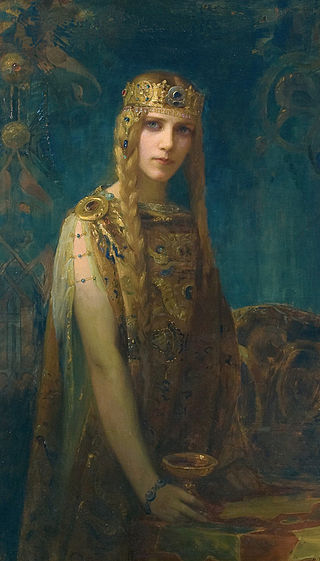
Iseult, alternatively Isolde and other spellings, is the name of several characters in the legend of Tristan and Iseult. The most prominent is Iseult of Ireland, the wife of Mark of Cornwall and the lover of Tristan. Her mother, the queen of Ireland, is also named Iseult. The third is Iseult of the White Hands, the daughter of Hoel of Brittany and the sister of Kahedin.

King Arthur is a 2004 historical adventure film directed by Antoine Fuqua and written by David Franzoni. It features an ensemble cast with Clive Owen as the title character, Ioan Gruffudd as Lancelot and Keira Knightley as Guinevere, along with Mads Mikkelsen, Joel Edgerton, Hugh Dancy, Ray Winstone, Ray Stevenson, Stephen Dillane, Stellan Skarsgård and Til Schweiger.

Mark of Cornwall was a sixth-century King of Kernow (Cornwall), possibly identical with King Conomor. He is best known for his appearance in Arthurian legend as the uncle of Tristan and the husband of Iseult who engages with Tristan in a secret liaison, giving Mark the epithet "Cuckold King".

The Questing Beast, or the Beast Glatisant, is a cross-animal monster appearing in many medieval texts of Arthurian legend and modern works inspired by them. In the French prose cycles, and consequently in the quasi-canon of Le Morte d'Arthur, the hunt for the Beast is the subject of quests futilely undertaken by King Pellinore and his family and finally achieved by Sir Palamedes and his companions.
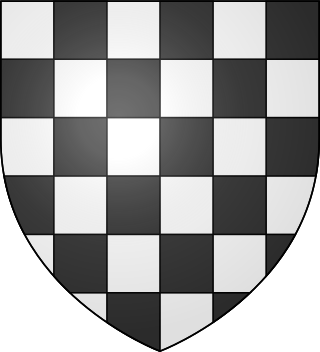
Palamedes is a Knight of the Round Table in the Arthurian legend. He is a Middle Eastern pagan who converts to Christianity later in his life, and his unrequited love for Iseult brings him into frequent conflict with Tristan. Palamedes' father King Esclabor and brothers Safir and Segwarides also join the Round Table. The romance Palamedes was named after him.
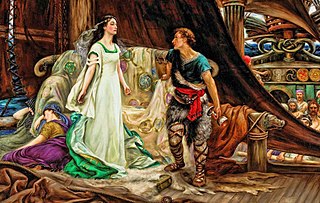
Tristan and Iseult, also known as Tristan and Isolde and other names, is a medieval chivalric romance told in numerous variations since the 12th century. Of disputed source, usually assumed to be primarily Celtic, the tale is a tragedy about the illicit love between the Cornish knight Tristan and the Irish princess Iseult in the days of King Arthur. It depicts Tristan's mission to escort Iseult from Ireland to marry his uncle, King Mark of Cornwall. On the journey, Tristan and Iseult ingest a love potion, instigating a forbidden love affair between them.

King Hoel, also known as Sir Howel, Saint Hywel and Hywel the Great, was a late 5th- and early 6th-century member of the ruling dynasty of Cornouaille. He may have ruled Cornouaille jointly after the restoration of his father, Budic II of Brittany, but he seems to have predeceased his father and left his young son, Tewdwr, as Budic's heir.

Fire and Sword is a 1981 romantic drama film directed by Veith von Fürstenberg. It is based on the legend of Tristan and Isolde, played by Christoph Waltz and Antonia Preser. Leigh Lawson and Peter Firth also star. Set during a raging war between Cornwall and Ireland, the film explores themes on conflict between magic and religion, violence, and destruction.
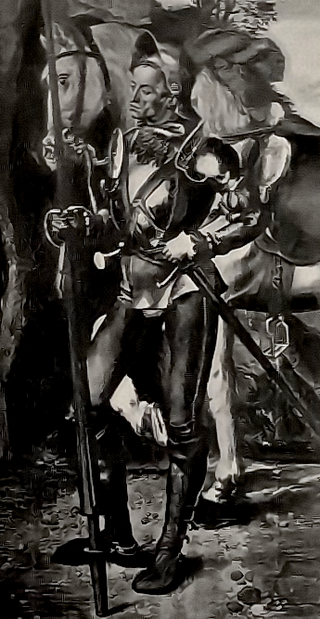
Dinadan is a Cornish knight of the Round Table in the Arthurian legend's chivalric romance tradition of the Prose Tristan and its adaptations, including a part of Le Morte d'Arthur. Best known for his humor and pragmatism, he is a close friend of the protagonist Tristan. Dinadan is the subject of several often comedic episodes until his murder by Mordred and Agravain.
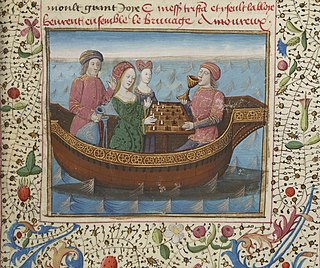
The Prose Tristan is an adaptation of the Tristan and Iseult story into a long prose romance, and the first to tie the subject entirely into the arc of the Arthurian legend. It was also the first major Arthurian prose cycle commenced after the widely popular Lancelot-Grail, which influenced especially the later portions of the Prose Tristan.
Eilhart von Oberge was a German poet of the late 12th century. He is known exclusively through his Middle High German romance Tristrant, the oldest surviving complete version of the Tristan and Iseult story in any language. Tristrant is part of the "common" or "primitive" branch of the legend, best known through Béroul's fragmentary Norman language Tristan. It is German literature's first rendition of the story, though Gottfried von Strassburg's Tristan, part of the "courtly" branch, is more famous and respected.
Brangaine is the handmaid and confidante of Iseult of Ireland in the Arthurian legend of Tristan and Iseult. She appears in most versions of the story.

Cornish mythology is the folk tradition and mythology of the Cornish people. It consists partly of folk traditions developed in Cornwall and partly of traditions developed by Britons elsewhere before the end of the first millennium, often shared with those of the Breton and Welsh peoples. Some of this contains remnants of the mythology of pre-Christian Britain.
"Chevrefoil" is a Breton lai by the medieval poet Marie de France. The eleventh poem in the collection is called The Lais of Marie de France and its subject is an episode from the romance of Tristan and Iseult. The title means "honeysuckle," a symbol of love in the poem. "Chevrefoil" consists of 118 lines and survives in two manuscripts, Harley 978 or MS H, which contains all the Lais, and in Bibliothèque Nationale, nouv. acq. fr. 1104, or MS S.
Tristram of Lyonesse is a long epic poem written by the British poet Algernon Charles Swinburne, that recounts in grand fashion the famous medieval story of the ill-fated lovers Tristan and Isolde. It was first published in 1882 by Chatto and Windus, in a volume entitled Tristram of Lyonesse and Other Poems. Swinburne himself considered Tristram of Lyonesse to be the crowning achievement of his poetic career. William Morris commented that Swinburne's work 'always seemed to me to be founded on literature, not on nature'.

Tristram and Iseult, published in 1852 by Matthew Arnold, is a narrative poem containing strong romantic and tragic themes. This poem draws upon the Tristan and Iseult legends which were popular with contemporary readers.

Tristan and Iseult is a children's novel by Rosemary Sutcliff and was first published in 1971. A re-telling of the ancient legend, it received the Boston-Globe Horn Book Award in 1972, and was runner-up for the 1972 Carnegie Medal.
Annowre (Anouwre) is an evil enchantress who desires King Arthur in Thomas Malory's Le Morte d' Arthur. Malory based her on a nameless character from the earlier Prose Tristan, who was named as Elergia in the Italian La Tavola Ritonda.

The Old French Tristan Poems: A Bibliographic Guide is a 1980 bibliography by David J. Shirt, a scholar of French literature who specialised in Arthurian and Tristan studies. It presents an overview of the literature on the medieval Tristan and Iseult poems, including the 12th-century poems by Béroul and Thomas of Britain. The book was published by Grant & Cutler as volume 28 of the Research Bibliographies and Checklists series. Critics generally praised its layout and use of cross-references, though some pointed out studies that the bibliography omitted. Reviewers also applauded Shirt's inclusion of a verse-by-verse index of Béroul's text.















